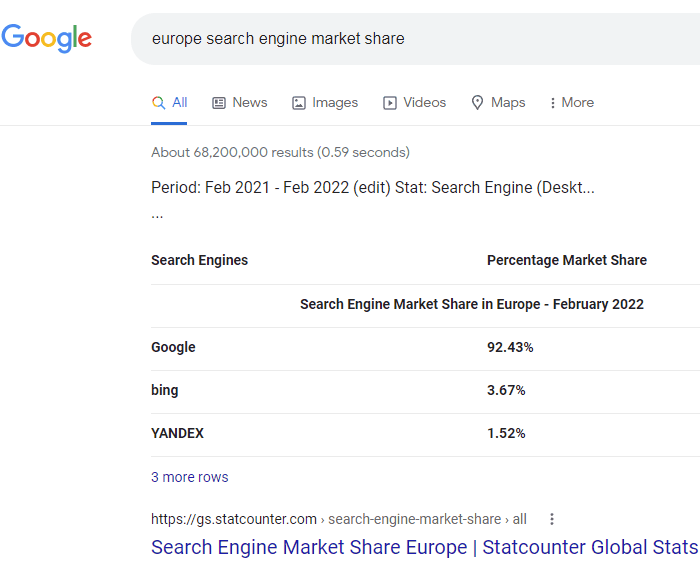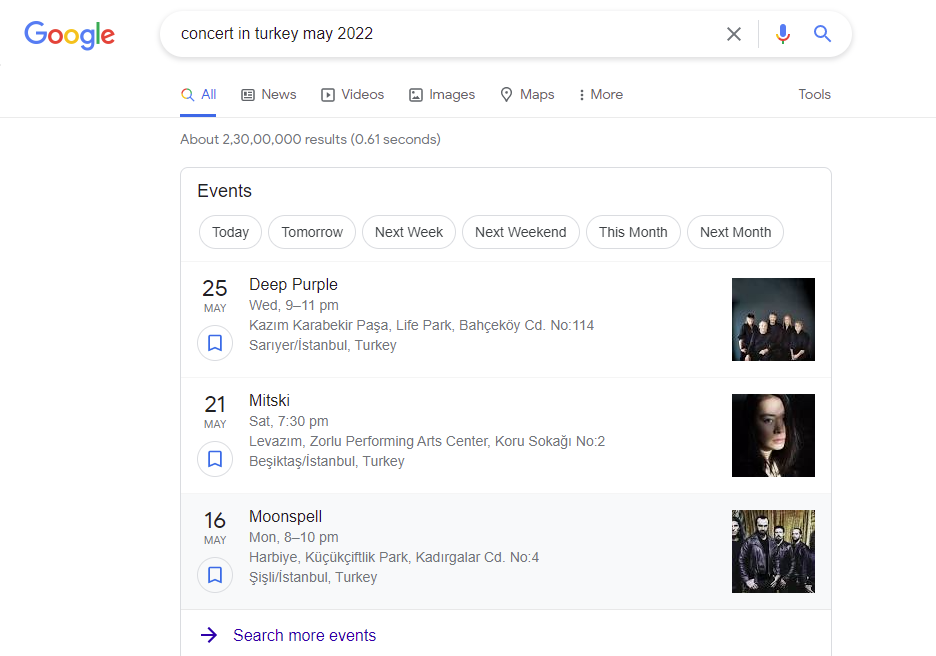How To Get Organic Page 1 Google Rankings In 10 Different Ways
May 24, 2022 | SEO, Digital Marketing | No Comments

Discover ten ways to go beyond the old ten blue links and increase traffic from Google’s improved organic search results.
Since its inception, Google search has been constantly evolving.
Much of the evolution over the last ten years has been driven by technological advancements, but also by changes in what users expect.
Here are ten opportunities for more Google traffic and how to get it.
Google has consistently been committed to making search results more useful, as well as responding to changing user behavior, which has recently been driven by the new demands of mobile search.
With the introduction of knowledge panels in 2012, featured snippets in 2014, and local search packs before that, optimizing for 10 blue links has become anachronistic.
It’s an old-school SEO tactic.
Rich results, featured snippets, Map Pack results, knowledge panels, and other features of an increasingly dynamic search results page provide opportunities for more site visitors.
How are you going to compete? By staying current.
In this post, we’ll look at how you can appear on Google’s Page 1 by optimizing your content for different types of search results.
(Please keep in mind that this is by no means exhaustive and is constantly changing as Google constantly tests and launches new features, and sometimes takes our favorite toys away).
The Most Common Types of Rich Search Results
The following examples will fall into one of these categories (with some overlap):
- Excellent Outcomes.
- Snippets of Interest
- Panels of Experts.
- Results for Local Businesses.
Rich results are organic search results that have been enhanced by adding information to a plain text search result and expanding it as a result.
Rich results increase the dynamic, visibility, and engagement of your results.

Featured snippets are answers that have been enhanced and appear at the top of search results (sometimes even above paid results).
Although it is sometimes referred to as “position zero,” it actually occupies one of the traditional ten organic positions.
These are enhanced organic search results that include visual enhancements such as stars as part of a carousel of search results and may include images from multiple websites.

This search result typically responds to an informational query and may contain text, a numbered (or unnumbered) list, and images (sometimes from multiple sites).
Featured snippets enhance the dynamic, visible, and engaging nature of your organic search listings.
According to research data from various sources in 2020 and 2021, featured snippets appear in search results between 11 and 19 percent of the time.
It’s critical that you optimize for search engine optimization enhancements that make sense in the context of your business goals and searcher intent.
Knowledge panels are panels that provide information about what are commonly referred to as entities. People, places, organizations, movies, music, and other things are examples of entities.
Knowledge panels provide quick access to information about entities that are generated automatically.
Entities that are knowledge panel subjects can “claim” a knowledge panel and influence the information in that knowledge panel.
Google accepts user feedback on knowledge panels as well.
Knowledge panels allow organizations and individuals to present their information via Google.
Google Business Profile (formerly Google My Business) is a Google program that enables local businesses to manage their online presence whenever someone searches for their business, a local product, or a service.
The information in Google Business Profile is used to power the local Map Pack in organic search results.
It aids in the display of correct information in Google Maps and provides a way to control the business profile displayed in Google’s search results, including phone numbers, addresses, and hours.
Here are ten strategies for increasing your Page 1 – and even Position 1 – rankings in Google.
You’ll find tips and resources for each one to help you optimize for that type of result (though this is no guarantee that you’ll get it).
1. Organic Search Results in Plain Text
Getting to the top of Google’s plain text organic search results is more difficult than ever.
Not only is search extremely competitive, but search results that are simply blue links are becoming increasingly rare for certain types of questions, particularly “how-to” type search queries.
In terms of the ten blue links, they essentially no longer exist on mobile devices because search results on mobile are shown with a continuous scroll, eliminating the need for users to proceed to the next page of search results.

How to Prepare for It
- Respond to a searcher’s information request.
- Be the best in every way. That’s all it takes, really.
2. Video-Enhanced Results
It should come as no surprise that YouTube results appear prominently in Google’s search results.
Videos were previously displayed as a thumbnail next to the blue text link until last year.
Google now organizes them into Video Rich Results, which appear occasionally above regular text link results.

How to Prepare for It
- With relevant, high-quality titles, descriptions, and tags, you can help searchers and search engines understand the content of your video.
- Make use of the correct VideoObject Structured Data.
3. Results from a Carousel
According to Google’s documentation, carousel rich results are available for four types of content:
Course \ Movie \sRecipe \sRestaurant
It also appears to be available for other forms of entertainment other than movies, such as podcasts, and even Victorian-era authors.

How to Organize for It
Google’s markup requirements for all carousels can be found here.
4. Featured Snippet
A type of organic search result that includes approximately 50 words of text, the page title and URL, and a thumbnail of a featured image.
Featured snippets are an excellent way to increase the number of people who see your thought leadership content.

How to Organize for It
- Answer informational questions about your company and its products or services.
- Keep this paragraph format and a simple Q&A approach in mind when creating content for this type of result.
- Do the research to find out what questions people have and see what comes up. Is there any opportunity where no result is rendered? Are there any results that appear to be of poor quality or out of date? Begin there, and then apply what you’ve learned from your early efforts with the easiest opportunities to target more competitive search terms.
5. The snippet of a data table
Tables can be a useful tool for sharing information or demonstrating concepts.
It is worth noting that Google initially created this result for news media.
However, as brands increasingly function as publishers and may even tackle timely news stories, this could be a business opportunity as well.
Google can also read data from HTML tables (without structured data) and display it as a Data Table Snippet.

How to Prepare for It
Here you can learn about Google’s approach to dataset discovery and find developer resources.
6. Carousel of Top Stories
The carousel of top stories displays the headline, source name, and an expanded image. These results are available on both blogs and media websites.
Proper optimization here can result in your article being converted into action on the Google Assistant, allowing people to access your content via the voice assistant.

How to Prepare for It
- Whether or not an article is published in AMP, Google will display it in the top stories carousel.
- What matters is that the webpage employs properly structured data in order to convey relevant information that can be displayed in the “Top Stories” section of Google’s search results.
- Also, make sure to use the correct featured image size. Google recommends that images for AMP pages be at least 1200 pixels wide.
- Google’s article structured data developer page recommends a minimum width of 696 pixels for non-AMP pages. Google’s guidelines for the Google Discover program, on the other hand, recommend that all pages use images with a minimum width of 1200 pixels. So, for Google News, it’s best to use images that are at least 1200 pixels wide in order to be shown in both Google Discover and Google News.
7. Card for Local Business Knowledge Panel
Business panels can have a lot of functionality and interactivity with the right markup and optimizations.
Searchers can not only find your address, phone number, and hours of operation without visiting your website, but they may also be able to complete actions like booking a table, placing an order, or making an appointment.
Your panel expands as more relevant information is added, making it extremely difficult to overlook on both desktop and mobile.

How to Organize It
- Increase the size of your panel as much as possible by filling out your Google Business Profile (GBP) with descriptive, relevant information that will assist searchers in making a decision about your company.
- Monitor your GBP dashboard and interact with searchers who leave reviews, ask questions, or otherwise attempt to engage with your company on a regular basis.
- Keep all information up-to-date to avoid providing a poor searcher experience (for example, directing someone to a closed location) and eroding search engine trust in your brand.
- Here you can find specific markup to help with actions like reservation taking or online ordering.
8. Event-Rich Outcome
- Marking up your event pages with Event Structured Data improves the visibility of this information in Google Search and Maps results.
- Searchers can also see more events and filter by date by clicking through.

How To Prepare For It
- Use Google’s Data Highlighter to highlight a single event or a few on your website.
- Use the appropriate Event markup.
9. Snippet of Review
When Google discovers the correct review markups, it may expand your rich result with a review excerpt or an average combined rating score.
This rich search result type is currently available for books, local businesses, movies, music, products, and recipes.

How to Prepare for It
Follow Google’s optimization instructions here if you want to add a simple review or embed a review into another schema. Use the org type’s review property to add ratings to your reviews, or add aggregate ratings.
10. In the Knowledge Panel and Search, place your logo.
Make sure your logo appears in your business panel and in search at all times to reinforce your branding.

How to Prepare for It
- Use a logo that is at least 112 x 112px in.jpg,.png, SVG, or WebP format.
- Check that the image URL can be crawled and indexed.
- Use the appropriate markup.
These are just a few of the more widely appealing methods for obtaining multiple Page 1 results. There are many more, especially when it comes to vertical-specific results.
Before pursuing any particular type of result, make sure you understand the opportunity, competition, and searcher intent you hope to reach with that particular type of content.